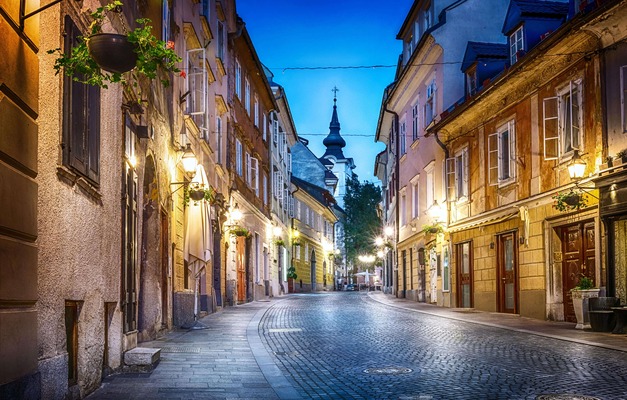
Naples & Amalfi Coast: Timeless Beauty and Coastal Charm
 7 Day Tour of Naples and Sorrento
7 Day Tour of Naples and Sorrento
Overview
Trip Map
Itinerary
Inclusions
Reviews







7 Days 6 Nights
Best Time: Jan-Dec
History Buffs
Exploring Scenic Countryside
The vibrant streets of Naples meet the breathtaking vistas of the Amalfi Coast on this unique journey through the heart of Southern Italy. Immerse yourself in the rich history and culture of Naples with private guided tours, and explore iconic landmarks like the ancient ruins of Pompeii. Enjoy leisurely days in the picturesque town of Sorrento, and savor stunning coastal views. The adventure continues with a private boat tour to Capri, revealing the island's hidden gems. Detailed travel guidance is available through our mobile app, ensuring a seamless and enriching experience.
- See the grand Piazza del Plebiscito & explore the unique architecture of Naples along narrow lanes.
- Wander through the historic streets of Pompeii, uncovering the secrets of this ancient city.
- Savor stunning coastal views of the Amalfi Coast from Villa Cimbrone and Villa Rufolo in Ravello.
- Relax at Marina Piccola in Sorrento, a perfect spot for swimming and sunbathing.
- Discover Capri’s iconic Mount Solaro, offering panoramic views of the island and beyond.
The vibrant streets of Naples meet the breathtaking vistas of the Amalfi Coast on this unique journey through the heart of Southern Italy. Immerse yourself in the rich history and culture of Naples with private guided tours, and explore iconic landmarks like the ancient ruins of Pompeii. Enjoy leisurely days in the picturesque town of Sorrento, and savor stunning coastal views. The adventure continues with a private boat tour to Capri, revealing the island's hidden gems. Detailed travel guidance is available through our mobile app, ensuring a seamless and enriching experience.
- See the grand Piazza del Plebiscito & explore the unique architecture of Naples along narrow lanes.
- Wander through the historic streets of Pompeii, uncovering the secrets of this ancient city.
- Savor stunning coastal views of the Amalfi Coast from Villa Cimbrone and Villa Rufolo in Ravello.
- Relax at Marina Piccola in Sorrento, a perfect spot for swimming and sunbathing.
- Discover Capri’s iconic Mount Solaro, offering panoramic views of the island and beyond.

The Veiled Christ
Churches & Monasteries

Castel Sant’Elmo
Castles & Chateaux

Teatro di San Carlo
Music & Theater

Archaeological Museum
Museums & Galleries

Via San Gregorio Armeno
Cultural

San Francesco d'Assisi Church
Churches & Monasteries

Sorrento Cathedral
Churches & Monasteries

Piazza Tasso
Architecture

Marina Piccola
Regional Cuisine
Must see sights

The Veiled Christ
Churches & Monasteries

Castel Sant’Elmo
Castles & Chateaux

Teatro di San Carlo
Music & Theater

Archaeological Museum
Museums & Galleries

Via San Gregorio Armeno
Cultural

San Francesco d'Assisi Church
Churches & Monasteries

Sorrento Cathedral
Churches & Monasteries

Piazza Tasso
Architecture

Marina Piccola
Regional Cuisine
Starting from
$1859
per person
 Not included
Not included Secure Your Customizable Trip
Enter your details to embark on a journey that can be tailored just for you.
Start
Travelers
Add Room
Remove Room
Preferred Hotel Stars
Craft Your Own Itinerary
Select your interests and destinations for a trip plan inspired by you.
Trip Map & Itinerary
Enable/Disable Map Scrolling
Click To Make Map Interactive

Trip Timeline
 Edit Details
Edit DetailsArrival
3 nights
Naples
Italy
Train: 1h
3 nights
Sorrento
Italy
Departure
Day-By-Day Itinerary
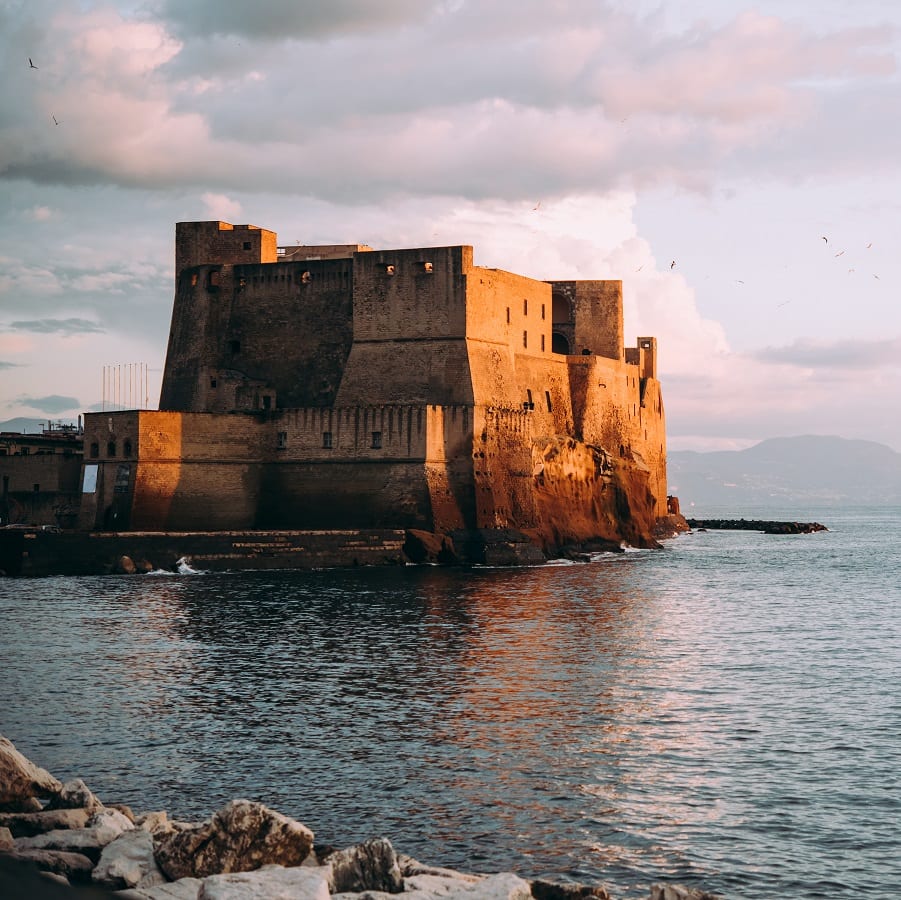
Day 1
Arrive Naples
View More
Day 1
Arrive Naples



To Be Determined
Arrival in Naples Airport and Transfer by Taxi
Naples has one main airport, Naples Capodichino International Airport. Official taxis are available directly at the terminal exit, or you can arrange a private transfer for added convenience. Official Naples taxis are white, with registration numbers on the front doors and a taxi sign on the roof. Uber is not available in Naples.

Day 1
Arrive Naples
View More


Day 1
Arrive Naples




To Be Determined:
Airport Transfer by Taxi
Mid-Day/Afternoon:
Naples Waterfront
Late Afternoon/Early Evening:
Naples Old Town

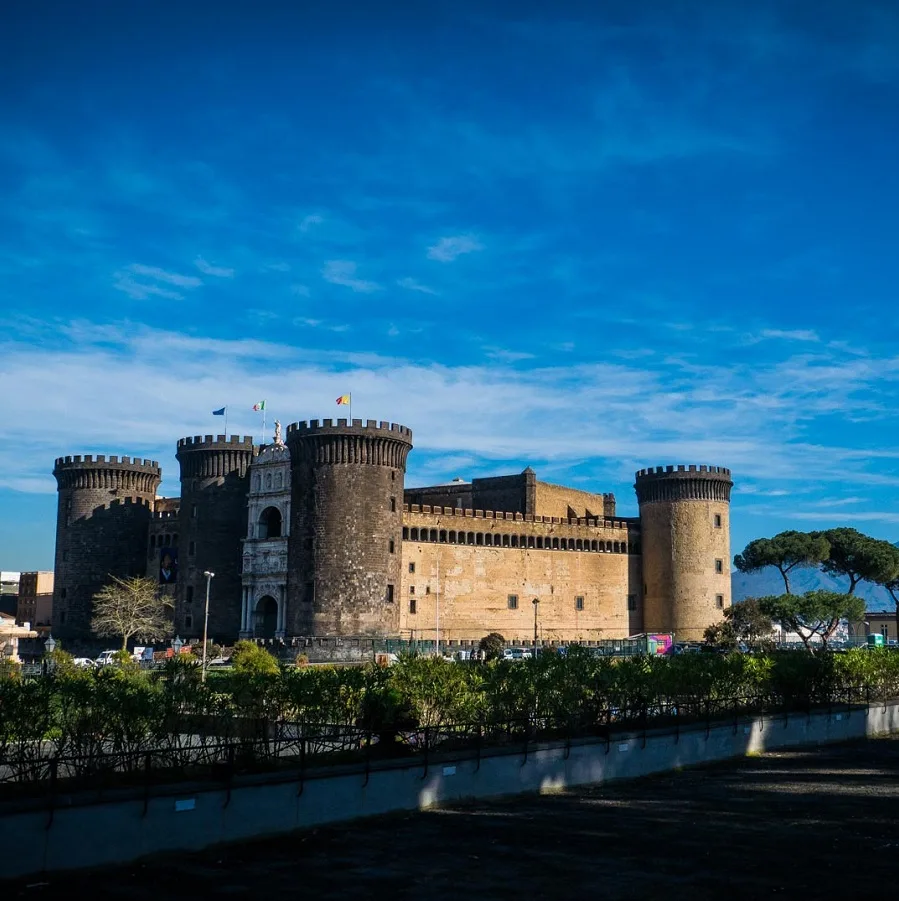
Day 2
Naples
View More
Day 2
Naples



9:00 AM - 12:00 PM
Discover Naples On Foot Guided Walking Tour
Discover both the ancient and modern history of Naples as well as the real town: its people, the students, the food (the best pizzerias and pastry shops in Italy), and the craftsmanship on this three-hour private guided walking tour. Your personal guide will pick you up directly from your hotel.

Day 2
Naples
View More


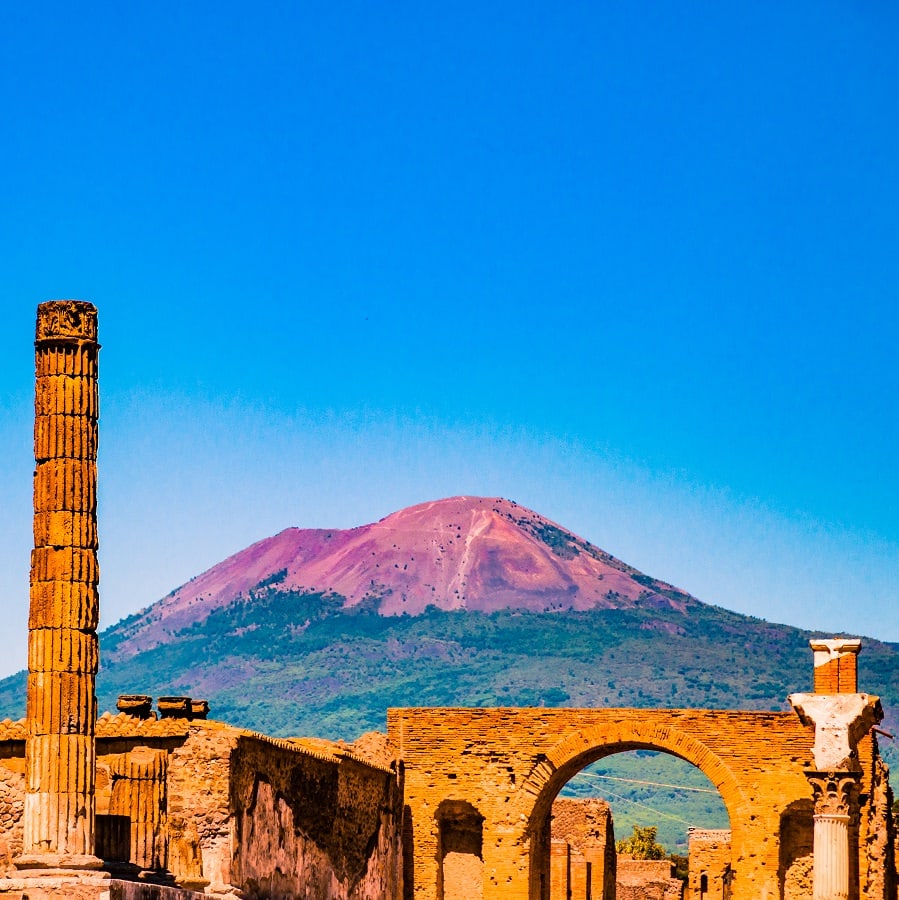
Day 3
Naples
View More
Day 3
Naples


Early Morning to Mid-Day
Excursion to the Ancient City of Pompeii
Possibly the most fascinating and accessible archaeological site in the world, Pompeii has been slowly revealing its secrets to the world since excavations began in earnest back in the late 18th century. Even today archaeologists are still uncovering unexplored parts of the site and building up a more accurate picture of how Pompeians lived prior to the catastrophic explosion of nearby Mt Vesuvius in 79 AD. While the ruins are fairly easy to reach via the local train network, taking a guided tour from Naples can be a more comfortable experience. Since the site is so incredibly large, it is also helpful to see it with a good guide who will organize your time there, as well as tell you the history and stories behind what you see. On the other hand, traveling independently and using the very cost-effective Artecard for entrance allows you to see the ruins at your own pace.

House of the Vettii
Visit this incredibly well-preserved upper class residence.
Show More

Amphitheater
See the oldest surviving Roman amphitheatre - built in 70 BC!
Show More

Brothel
Visit the Lupanare (brothel) of Pompeii to see the preserved erotic paintings and ancient grafiti.
Show More

House of the Tragic Poet
Visit this fascinating restored Pompeiian home with a famous animal mosaic.
Show More

House of the Vettii
Visit this incredibly well-preserved upper class residence.
Show More

Amphitheater
See the oldest surviving Roman amphitheatre - built in 70 BC!
Show More

Brothel
Visit the Lupanare (brothel) of Pompeii to see the preserved erotic paintings and ancient grafiti.
Show More

House of the Tragic Poet
Visit this fascinating restored Pompeiian home with a famous animal mosaic.
Show More
prev
next

Day 3
Naples
View More

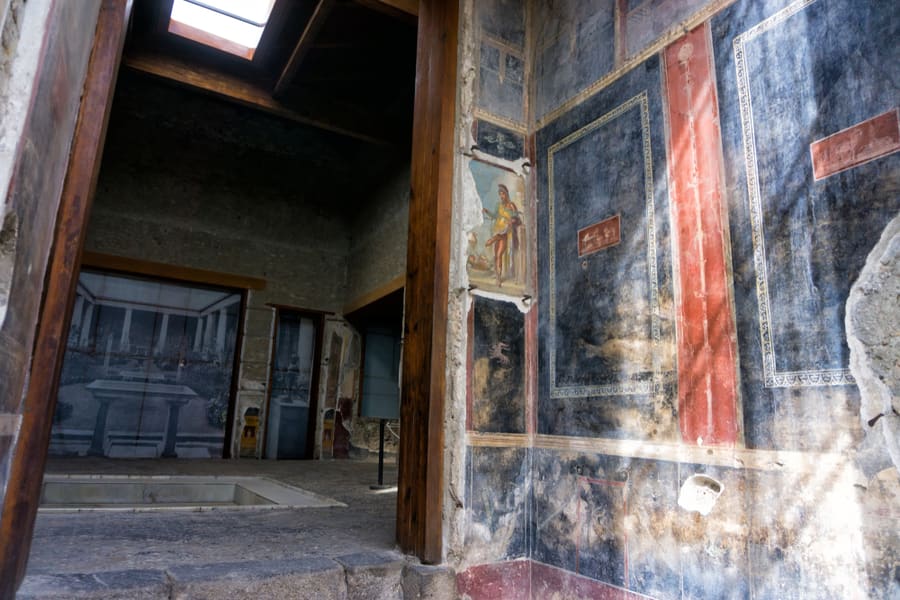
House of the Vettii
 Highlight of Ruins of Pompeii
Highlight of Ruins of PompeiiVisit this incredibly well-preserved upper class residence.
The House of the Vetti is one of the richest and most famous sights in Pompeii. It was the property of two wealthy merchants, and it features some beautiful original wall paintings, still in their original positions, the most famous (or notorious) of which is the extraordinary front image of the god Priapus weighing his enormous phallus against a money bag.
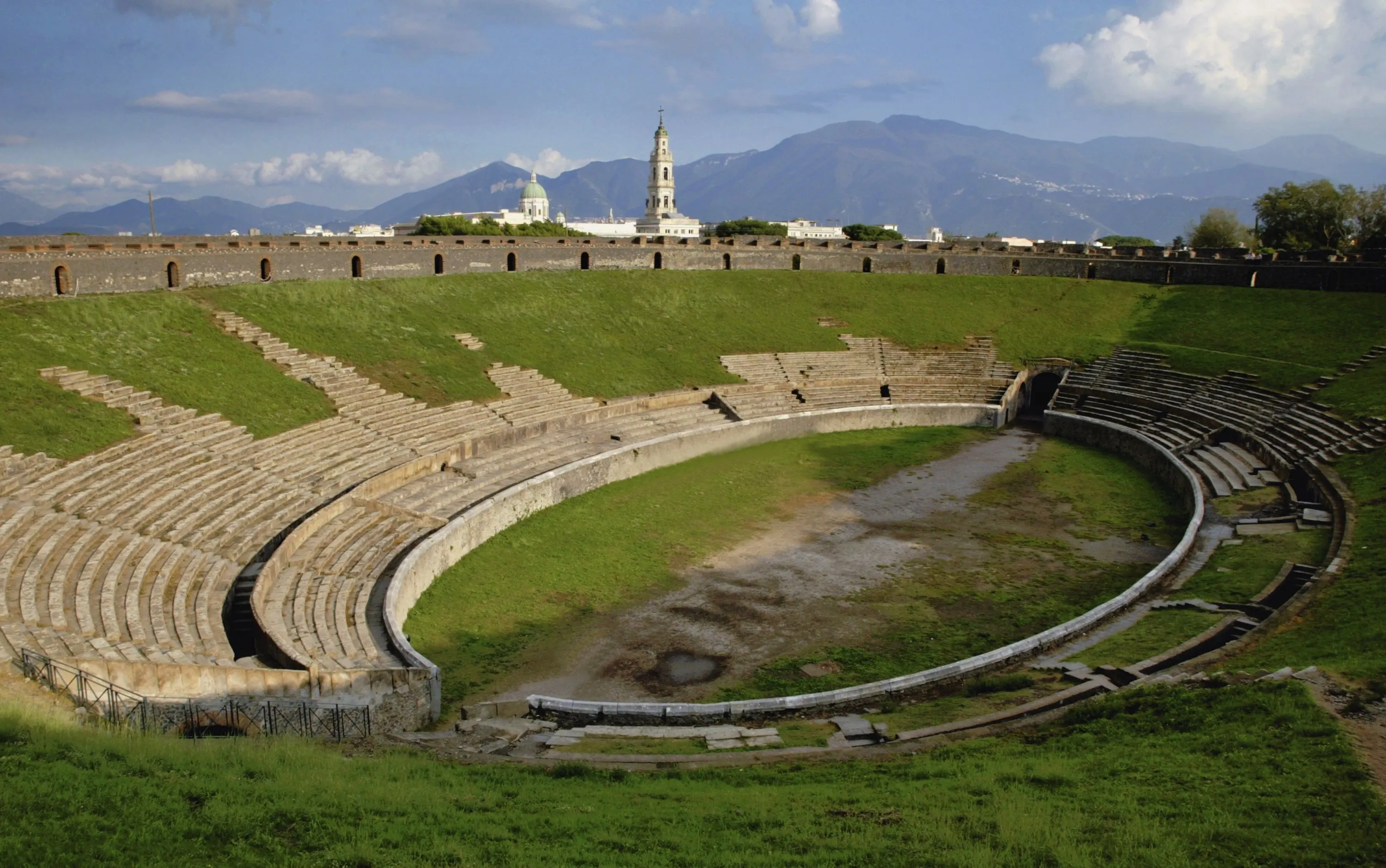
Amphitheater
 Highlight of Ruins of Pompeii
Highlight of Ruins of PompeiiSee the oldest surviving Roman amphitheatre - built in 70 BC!
The amphitheatre was used as a venue for bloody gladiatorial shows with a capacity to hold over 20,000 spectators. It is one of the oldest and most complete pre-Colosseum amphitheatres in the Roman world and was miraculously well preserved following the eruption in 79 AD.
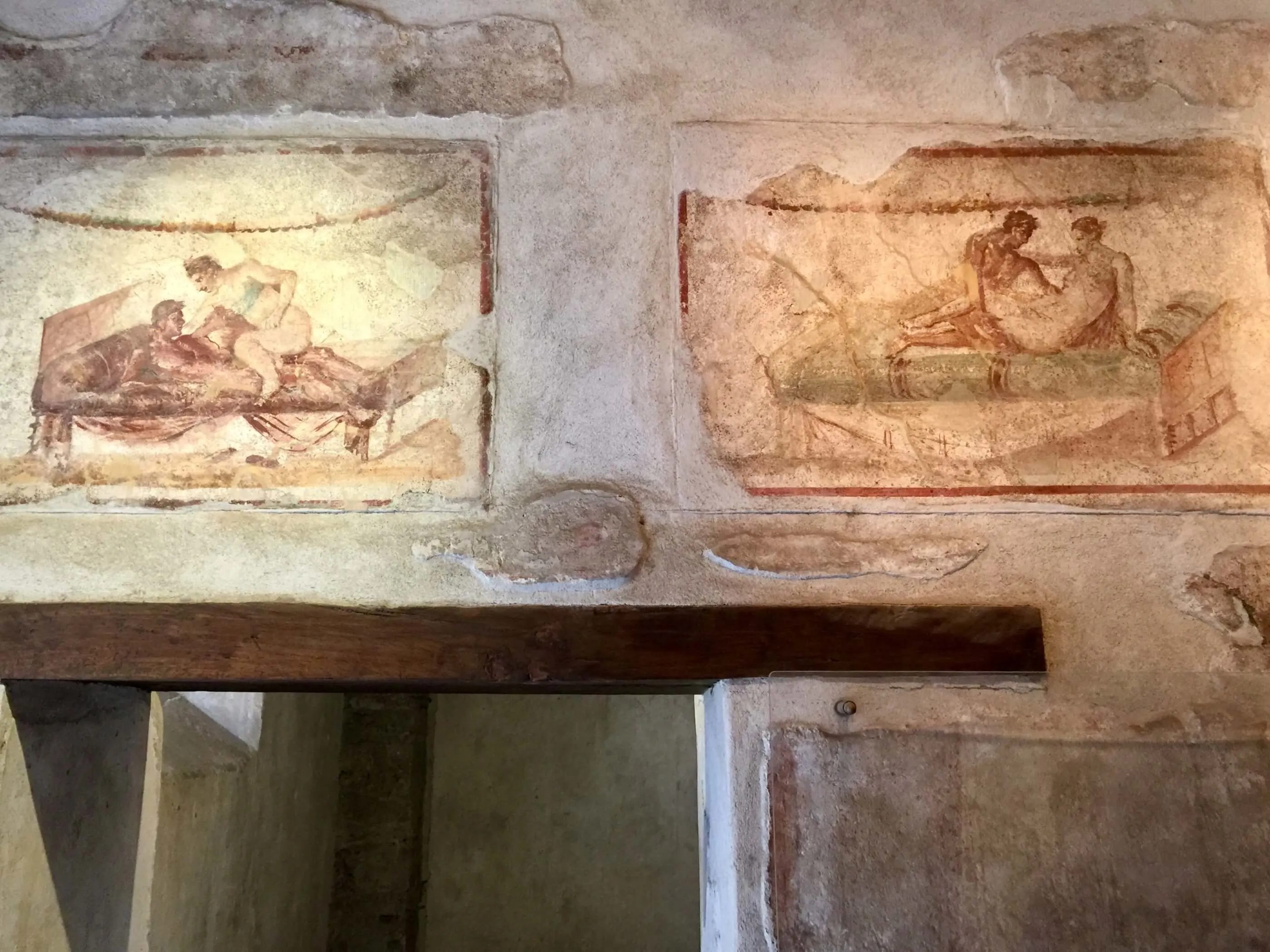
Brothel
 Highlight of Ruins of Pompeii
Highlight of Ruins of PompeiiVisit the Lupanare (brothel) of Pompeii to see the preserved erotic paintings and ancient grafiti.
The only brothel in town is located behind the Stabian Baths and has five small cells, each with its own built-in stone bed and a series of explicitly erotic paintings, possibly acting as a menu from which customers could identify their required services, or perhaps simply as a bit of "inspirational" decoration. Unsurprisingly, it is one of the most visited ruins in Pompeii.

House of the Tragic Poet
 Highlight of Ruins of Pompeii
Highlight of Ruins of PompeiiVisit this fascinating restored Pompeiian home with a famous animal mosaic.
On the threshold is a mosaic dog, with the inscription cave canem ('beware of the dog'). Some of the most striking wall paintings housed in the National Archaeological Museum in the center of Naples were taken from this house.

House of the Vettii
 Highlight of Ruins of Pompeii
Highlight of Ruins of PompeiiVisit this incredibly well-preserved upper class residence.
The House of the Vetti is one of the richest and most famous sights in Pompeii. It was the property of two wealthy merchants, and it features some beautiful original wall paintings, still in their original positions, the most famous (or notorious) of which is the extraordinary front image of the god Priapus weighing his enormous phallus against a money bag.

Amphitheater
 Highlight of Ruins of Pompeii
Highlight of Ruins of PompeiiSee the oldest surviving Roman amphitheatre - built in 70 BC!
The amphitheatre was used as a venue for bloody gladiatorial shows with a capacity to hold over 20,000 spectators. It is one of the oldest and most complete pre-Colosseum amphitheatres in the Roman world and was miraculously well preserved following the eruption in 79 AD.

Brothel
 Highlight of Ruins of Pompeii
Highlight of Ruins of PompeiiVisit the Lupanare (brothel) of Pompeii to see the preserved erotic paintings and ancient grafiti.
The only brothel in town is located behind the Stabian Baths and has five small cells, each with its own built-in stone bed and a series of explicitly erotic paintings, possibly acting as a menu from which customers could identify their required services, or perhaps simply as a bit of "inspirational" decoration. Unsurprisingly, it is one of the most visited ruins in Pompeii.

House of the Tragic Poet
 Highlight of Ruins of Pompeii
Highlight of Ruins of PompeiiVisit this fascinating restored Pompeiian home with a famous animal mosaic.
On the threshold is a mosaic dog, with the inscription cave canem ('beware of the dog'). Some of the most striking wall paintings housed in the National Archaeological Museum in the center of Naples were taken from this house.
prev
next

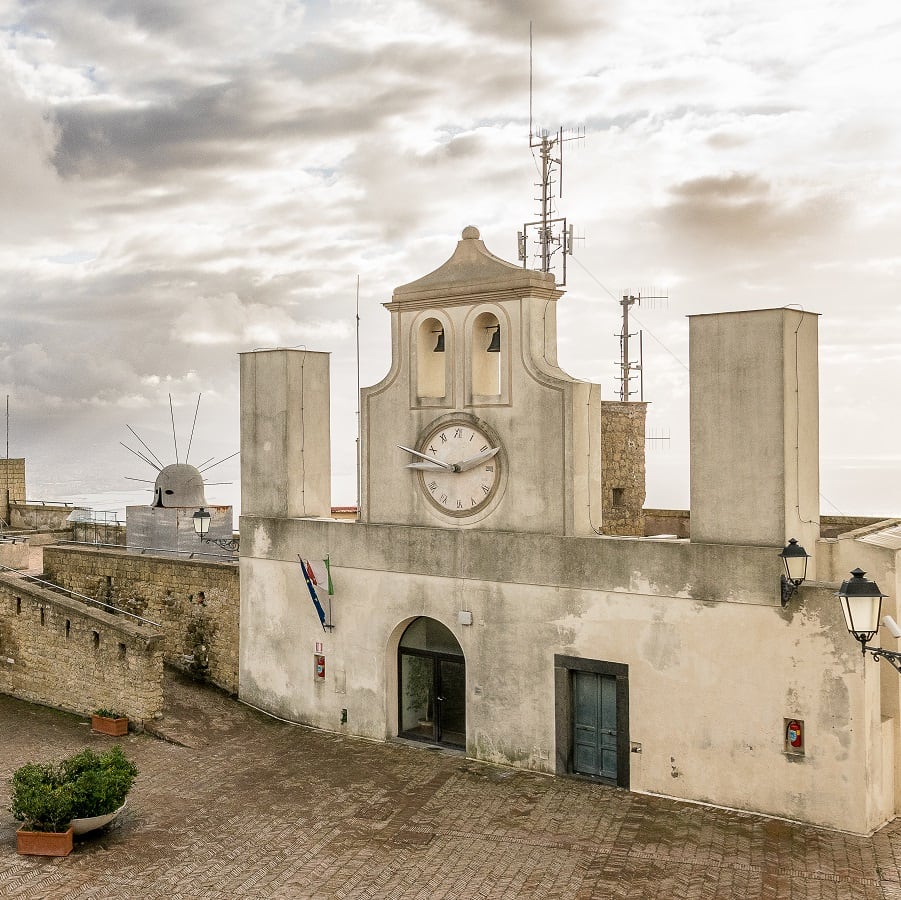
Day 4
Naples to Sorrento
View More
Day 4
Naples to Sorrento






Morning/Mid-Day
Exploring the Vomero District
Spend time exploring Naples' more laid back district of Vomero, which is spread out on a hill above the city. You can ride to the top using Naples' excellent funicular rail services, the cost of which is covered by the highly recommended Arte Card. Once up to the top, you'll find yourself in the heart of the hill district, Piazza Vanvitelli, surrounded by four Neo-Renaissance palaces. It's a popular area for young people, who flock to its many bars, renowned ice-cream parlors, and pedestrianized cross streets. A stone's throw from both Piazza Vanvitelli you'll discover the Villa Floridiana, a beautifully sited public garden on a spur overlooking the sea, which is famous for its camellias. A five minute walk from the funicular will bring you to the Castel Sant'Elmo, where you can take in the views from the ramparts. Once done at the castle, you can visit one of the most beautiful cloisters in Italy next door at the Certosa San Martino monastery and see its superb repository of Neapolitan and Italian art.

Castel Sant'Elmo
Walk around this imposing, star-shaped fortification that dates back to the 14th Century.
Show More

Certosa San Martino Monastery
Check out this former monastery, which boasts a beautiful cloister and a museum of art.
Show More

Castel Sant'Elmo
Walk around this imposing, star-shaped fortification that dates back to the 14th Century.
Show More

Certosa San Martino Monastery
Check out this former monastery, which boasts a beautiful cloister and a museum of art.
Show More

Castel Sant'Elmo
Walk around this imposing, star-shaped fortification that dates back to the 14th Century.
Show More

Certosa San Martino Monastery
Check out this former monastery, which boasts a beautiful cloister and a museum of art.
Show More
prev
next

Day 4
Naples to Sorrento
View More

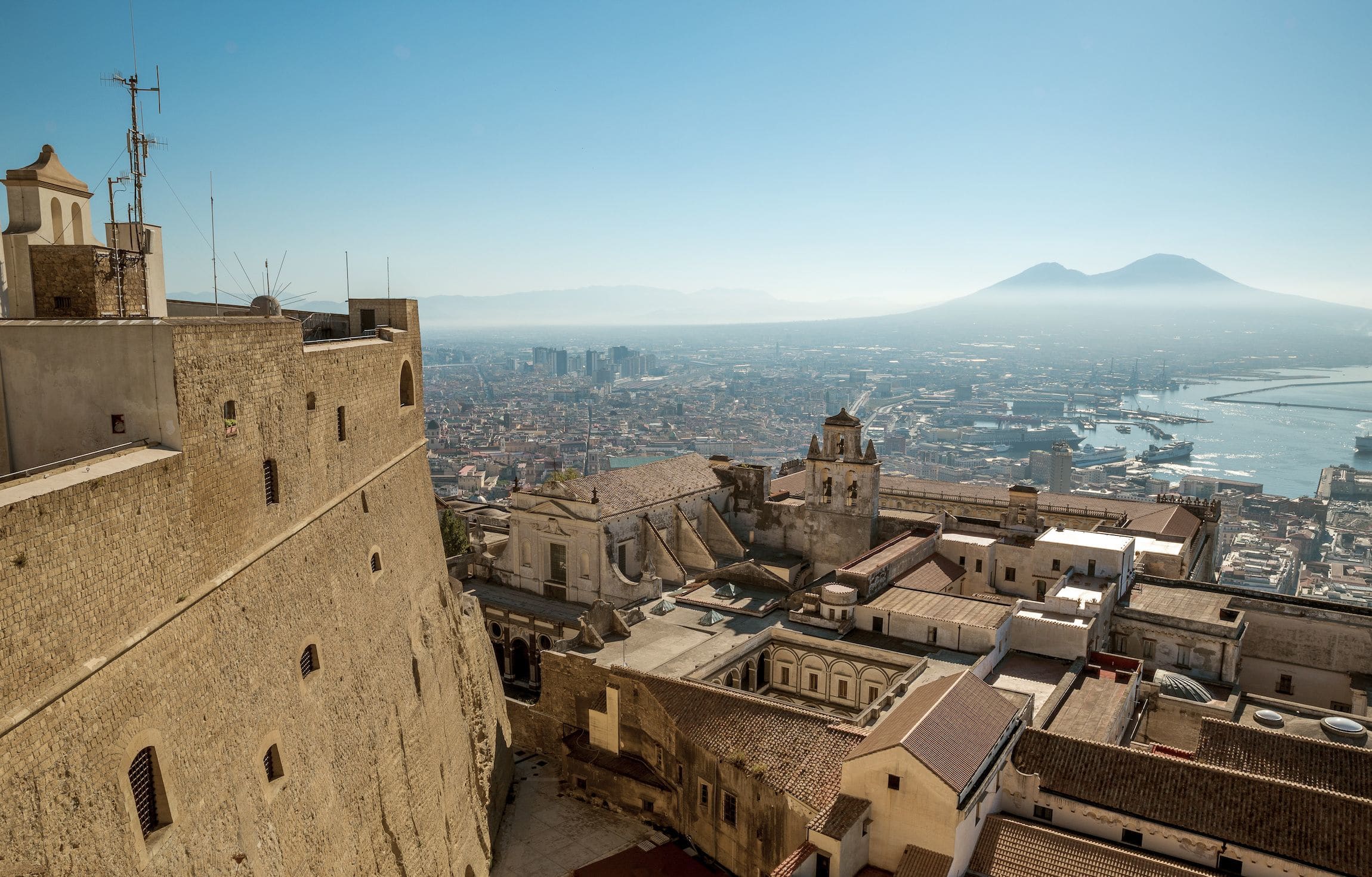
Castel Sant'Elmo
 Highlight of Vomero District
Highlight of Vomero DistrictWalk around this imposing, star-shaped fortification that dates back to the 14th Century.
This impressive fortification, a 14th-century structure once used for incarcerating political prisoners, today lords it over the streets below as a mostly administrative center for historical heritage in the city. Head straight for the top of the castle to admire the outstanding views from its upper battlements and walk the perimeter of its fortress walls.
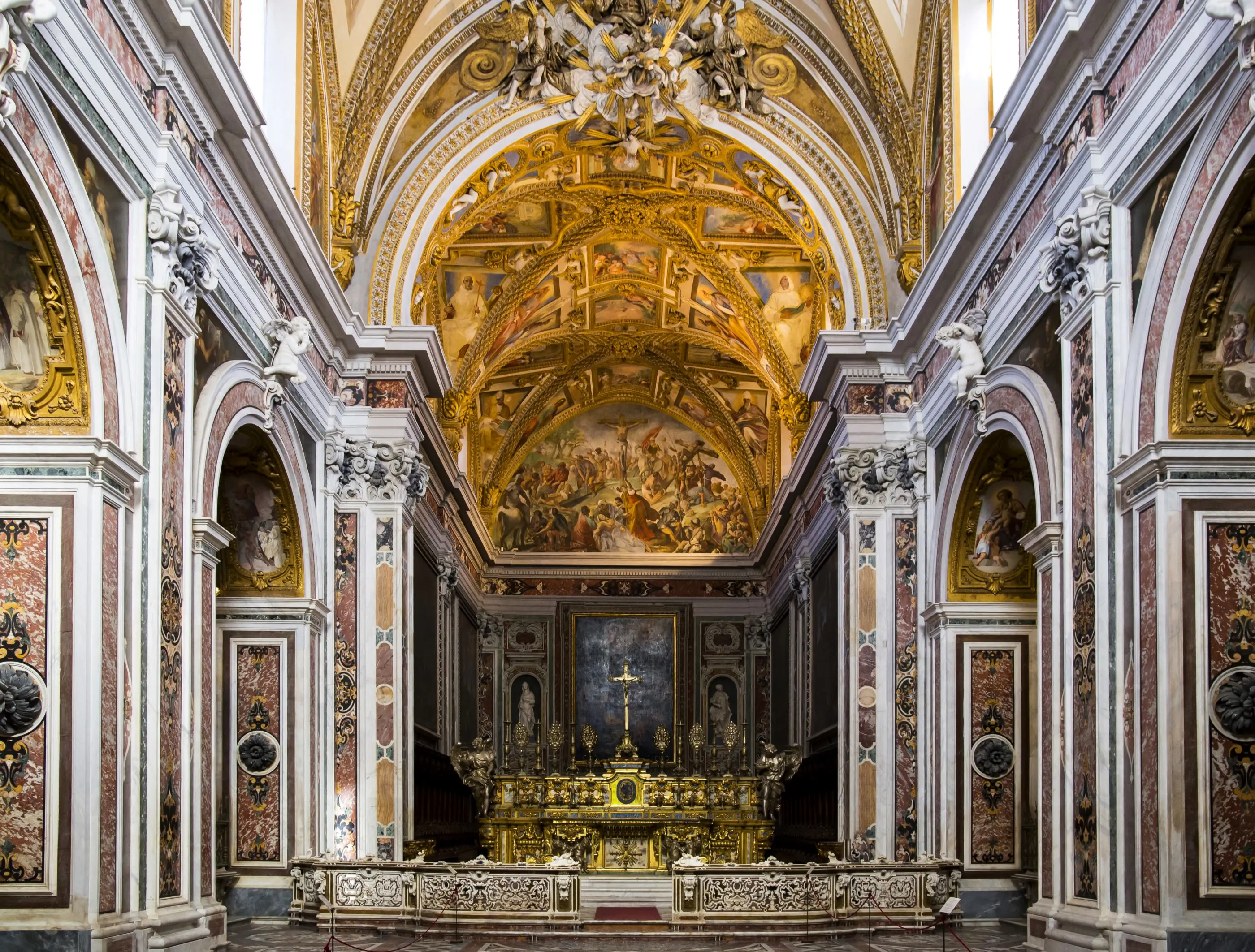
Certosa San Martino Monastery
 Highlight of Vomero District
Highlight of Vomero DistrictCheck out this former monastery, which boasts a beautiful cloister and a museum of art.
This 14th-century edifice has the next best views over the bay and is home to the Museo Nazionale di San Martino - a depository of the best of 17th Neapolitan painting. The charm of this location is heightened by the Grand Cloister and the ingeniously constructed terraced gardens, which are well worth the entrance fee alone.

Castel Sant'Elmo
 Highlight of Vomero District
Highlight of Vomero DistrictWalk around this imposing, star-shaped fortification that dates back to the 14th Century.
This impressive fortification, a 14th-century structure once used for incarcerating political prisoners, today lords it over the streets below as a mostly administrative center for historical heritage in the city. Head straight for the top of the castle to admire the outstanding views from its upper battlements and walk the perimeter of its fortress walls.

Certosa San Martino Monastery
 Highlight of Vomero District
Highlight of Vomero DistrictCheck out this former monastery, which boasts a beautiful cloister and a museum of art.
This 14th-century edifice has the next best views over the bay and is home to the Museo Nazionale di San Martino - a depository of the best of 17th Neapolitan painting. The charm of this location is heightened by the Grand Cloister and the ingeniously constructed terraced gardens, which are well worth the entrance fee alone.

Castel Sant'Elmo
 Highlight of Vomero District
Highlight of Vomero DistrictWalk around this imposing, star-shaped fortification that dates back to the 14th Century.
This impressive fortification, a 14th-century structure once used for incarcerating political prisoners, today lords it over the streets below as a mostly administrative center for historical heritage in the city. Head straight for the top of the castle to admire the outstanding views from its upper battlements and walk the perimeter of its fortress walls.

Certosa San Martino Monastery
 Highlight of Vomero District
Highlight of Vomero DistrictCheck out this former monastery, which boasts a beautiful cloister and a museum of art.
This 14th-century edifice has the next best views over the bay and is home to the Museo Nazionale di San Martino - a depository of the best of 17th Neapolitan painting. The charm of this location is heightened by the Grand Cloister and the ingeniously constructed terraced gardens, which are well worth the entrance fee alone.
prev
next

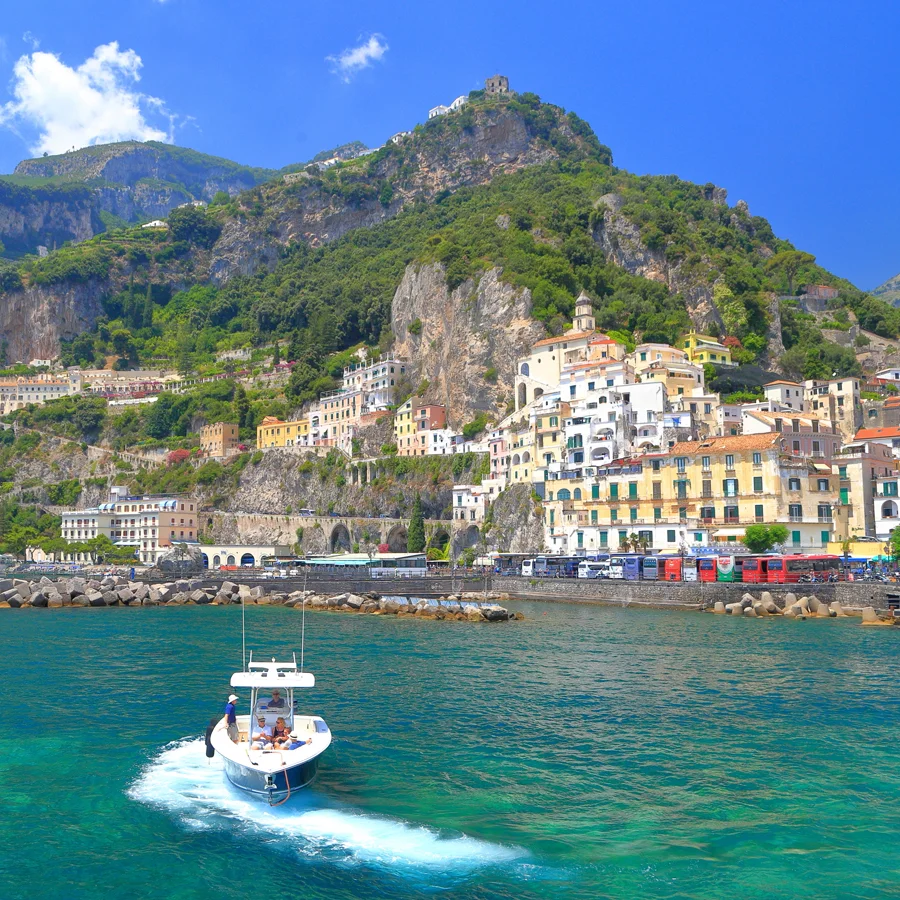
Day 5
Sorrento
View More
Day 5
Sorrento

Morning to Early Evening
Exploring the Amalfi Coast
The wildly scenic Amalfi Coast that runs from Sorrento to Salerno is infamous for its coastal road which is known as one of the best white-knuckle scenic rides in Europe. Given the hairy driving, impossible parking and traffic, and overcrowded public buses, the Amalfi Coast is best explored by private boat or public ferry, where you can enjoy the scenic beauty of the coastline and hop from town to town in comfort and without any delays. Unfortunately, the boats do not run all year, so depending on when you travel, your best bet for exploring the area may be with a guided tour by vehicle. The guide's local knowledge can help you avoid some of the traffic and cover the most beautiful spots. Of course a private tour at your own pace, by boat or car, is the ideal option.

Positano
Visit the most beautiful and most popular town on the Amalfi Coast.
Show More

Amalfi Town
Visit the largest town on the Amalfi Coast known for its culture, history and beaches.
Show More

Amalfi Cathedral
Visit one of the most important Cathedrals on the Amalfi Coast.
Show More

Positano
Visit the most beautiful and most popular town on the Amalfi Coast.
Show More

Amalfi Town
Visit the largest town on the Amalfi Coast known for its culture, history and beaches.
Show More

Amalfi Cathedral
Visit one of the most important Cathedrals on the Amalfi Coast.
Show More

Positano
Visit the most beautiful and most popular town on the Amalfi Coast.
Show More
prev
next

Day 5
Sorrento
View More

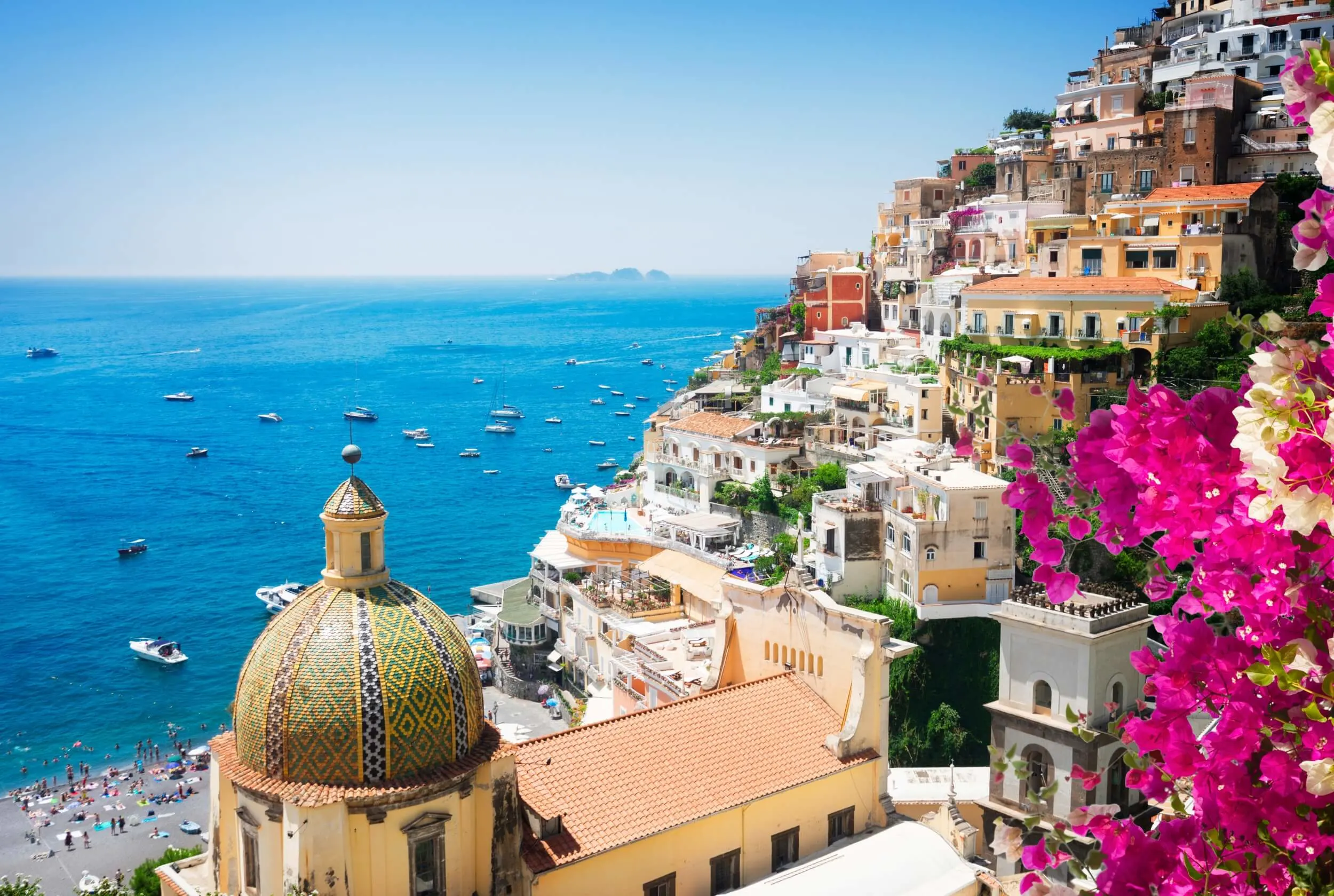
Positano
 Highlight of Amalfi Coast
Highlight of Amalfi CoastVisit the most beautiful and most popular town on the Amalfi Coast.
Known for its colorful buildings, beautiful panoramas, excellent seafood restaurants and luxury boutique shops, Positano is the go-to town for most people visiting the Amalfi Coast. Wander its narrow streets, spend time on its beach front or walk to the top of town to enjoy the famous views over the town and sea below.
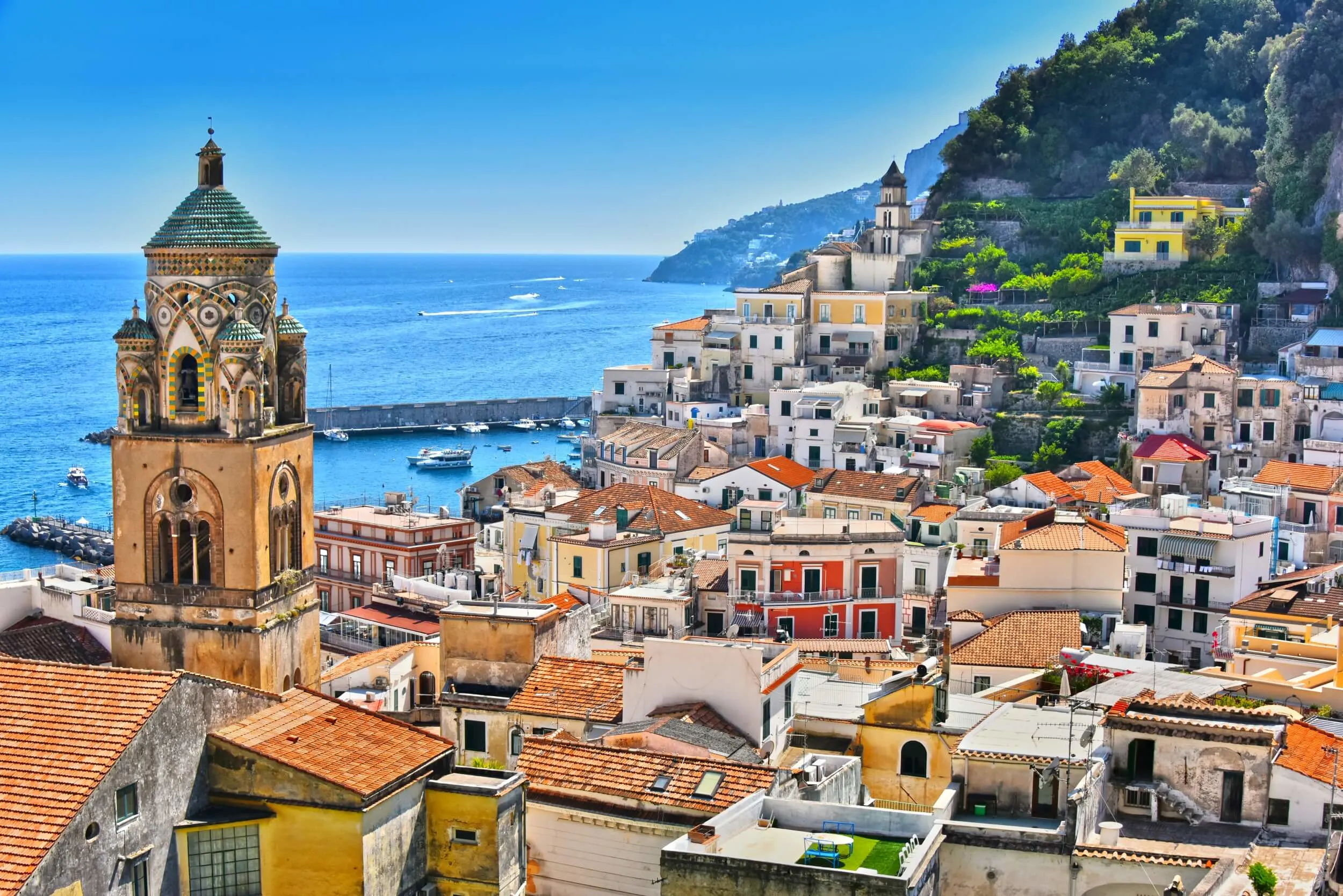
Amalfi Town
 Highlight of Amalfi Coast
Highlight of Amalfi CoastVisit the largest town on the Amalfi Coast known for its culture, history and beaches.
What was once an important trading centre is now a stunning seaside town and the second most visited after Positano. Spend time relaxing on the beach and dip your toes in the azure water, visit its historic Cathedral, enjoy a cold lemon spritz in one of its seafront restaurants or simply enjoy strolling around its lanes and take in its views.
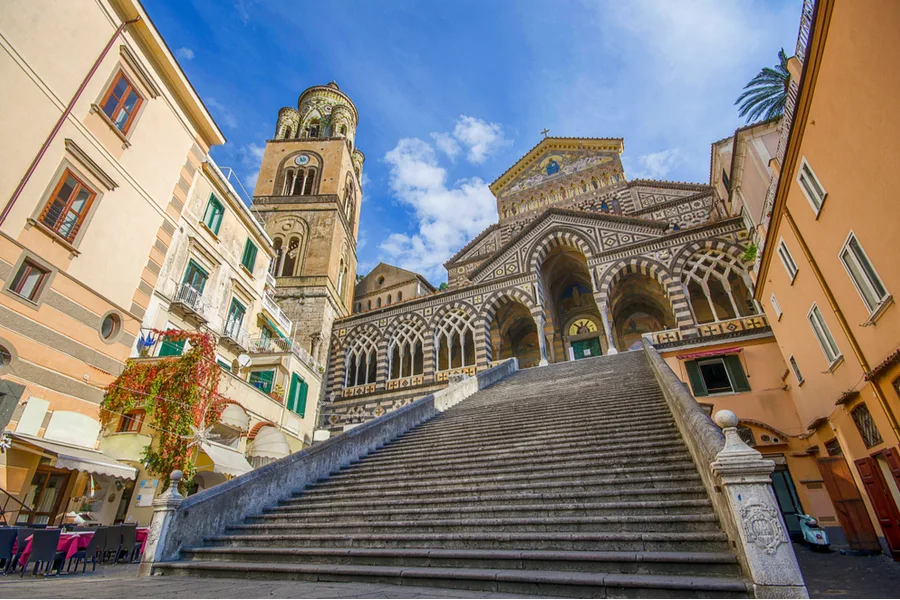
Amalfi Cathedral
 Highlight of Amalfi Coast
Highlight of Amalfi CoastVisit one of the most important Cathedrals on the Amalfi Coast.
The Amalfi Cathedral called “Duomo di Sant’Andrea Apostolo” can be found on the main Piazza Duomo in Amalfi Town. Built during the ninth century with a Byzantine architecture style, the cathedral is considered a must-visit for anyone who comes to Amalfi. Today the Duomo is a mix of Romanesque, Gothic and Baroque style, with an imposing staircase that leads to a 1,000-year-old bronze door that was given to the town by a wealthy local merchant who had the door made in Constantinople - modern-day Istanbul. Follow a one-way route around its interior which includes relics of Saint Andrew, the Apostle (the patron saint of Amalfi), the crypt and the cloister.

Positano
 Highlight of Amalfi Coast
Highlight of Amalfi CoastVisit the most beautiful and most popular town on the Amalfi Coast.
Known for its colorful buildings, beautiful panoramas, excellent seafood restaurants and luxury boutique shops, Positano is the go-to town for most people visiting the Amalfi Coast. Wander its narrow streets, spend time on its beach front or walk to the top of town to enjoy the famous views over the town and sea below.

Amalfi Town
 Highlight of Amalfi Coast
Highlight of Amalfi CoastVisit the largest town on the Amalfi Coast known for its culture, history and beaches.
What was once an important trading centre is now a stunning seaside town and the second most visited after Positano. Spend time relaxing on the beach and dip your toes in the azure water, visit its historic Cathedral, enjoy a cold lemon spritz in one of its seafront restaurants or simply enjoy strolling around its lanes and take in its views.

Amalfi Cathedral
 Highlight of Amalfi Coast
Highlight of Amalfi CoastVisit one of the most important Cathedrals on the Amalfi Coast.
The Amalfi Cathedral called “Duomo di Sant’Andrea Apostolo” can be found on the main Piazza Duomo in Amalfi Town. Built during the ninth century with a Byzantine architecture style, the cathedral is considered a must-visit for anyone who comes to Amalfi. Today the Duomo is a mix of Romanesque, Gothic and Baroque style, with an imposing staircase that leads to a 1,000-year-old bronze door that was given to the town by a wealthy local merchant who had the door made in Constantinople - modern-day Istanbul. Follow a one-way route around its interior which includes relics of Saint Andrew, the Apostle (the patron saint of Amalfi), the crypt and the cloister.

Positano
 Highlight of Amalfi Coast
Highlight of Amalfi CoastVisit the most beautiful and most popular town on the Amalfi Coast.
Known for its colorful buildings, beautiful panoramas, excellent seafood restaurants and luxury boutique shops, Positano is the go-to town for most people visiting the Amalfi Coast. Wander its narrow streets, spend time on its beach front or walk to the top of town to enjoy the famous views over the town and sea below.
prev
next

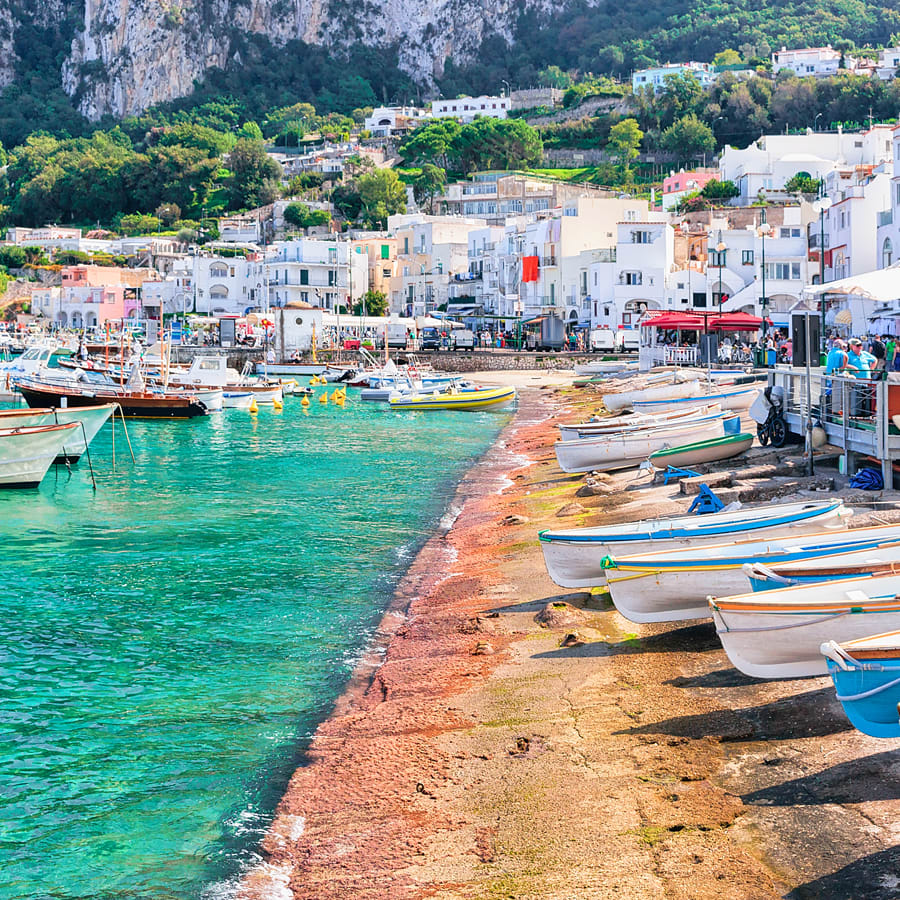
Day 6
Sorrento
View More
Day 6
Sorrento

8:30 AM - 5:30 PM
Private Guided Trip to the island of Capri
Enjoy unforgettable scenarios and pure beauty on this tour of Capri island. Travel by hydrofoil to the island of Capri before boarding a private traditional motor-boat to enjoy the Mediterranean at its best: powerful nature, cliffs overhanging a dark blue sea and white-washed villas. Walk with your guide across beautiful gardens and ancient roads. Take some time at leisure for fancy shopping or for a nice lunch. In Capri, there is satisfaction for every taste!

Blue Grotto
Take a boat trip around the island to reach this mystical Blue grotto cave.
Show More

Blue Grotto
Take a boat trip around the island to reach this mystical Blue grotto cave.
Show More

Blue Grotto
Take a boat trip around the island to reach this mystical Blue grotto cave.
Show More

Blue Grotto
Take a boat trip around the island to reach this mystical Blue grotto cave.
Show More

Blue Grotto
Take a boat trip around the island to reach this mystical Blue grotto cave.
Show More
prev
next

Day 6
Sorrento
View More

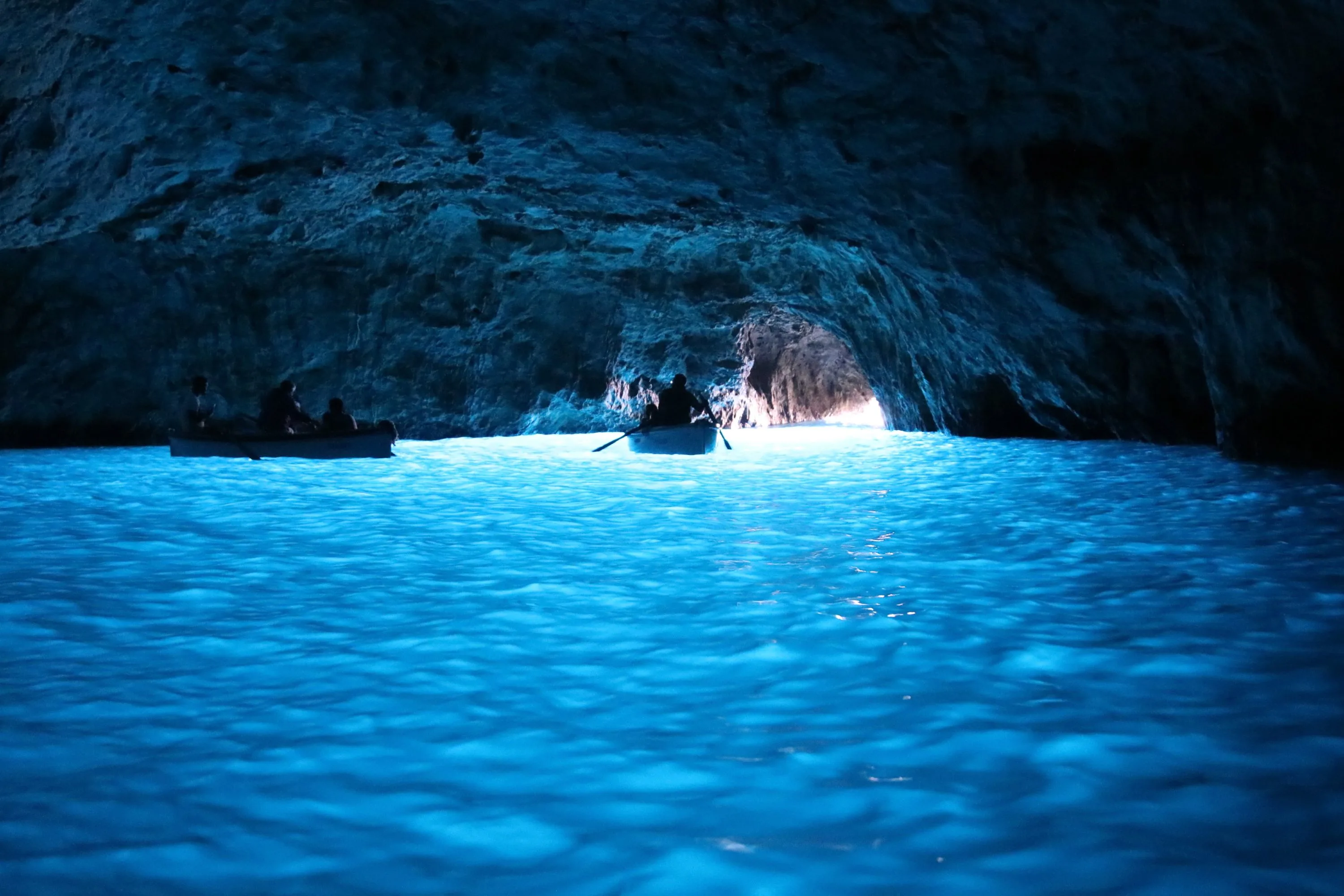
Blue Grotto
 Highlight of Capri, Guided
Highlight of Capri, GuidedTake a boat trip around the island to reach this mystical Blue grotto cave.
Named the Grotto Azzurra in Italian (Blue Grotto), this famous sea cave is a popular trip from Capri by boat. Sunlight passing through the small entrance creates a bright blue water grotto which is only accessible by a small rowing boat. Lie down flat in the boat, pass through the entrance and awe at the aqua colours of this natural wonder.

Blue Grotto
 Highlight of Capri, Guided
Highlight of Capri, GuidedTake a boat trip around the island to reach this mystical Blue grotto cave.
Named the Grotto Azzurra in Italian (Blue Grotto), this famous sea cave is a popular trip from Capri by boat. Sunlight passing through the small entrance creates a bright blue water grotto which is only accessible by a small rowing boat. Lie down flat in the boat, pass through the entrance and awe at the aqua colours of this natural wonder.

Blue Grotto
 Highlight of Capri, Guided
Highlight of Capri, GuidedTake a boat trip around the island to reach this mystical Blue grotto cave.
Named the Grotto Azzurra in Italian (Blue Grotto), this famous sea cave is a popular trip from Capri by boat. Sunlight passing through the small entrance creates a bright blue water grotto which is only accessible by a small rowing boat. Lie down flat in the boat, pass through the entrance and awe at the aqua colours of this natural wonder.

Blue Grotto
 Highlight of Capri, Guided
Highlight of Capri, GuidedTake a boat trip around the island to reach this mystical Blue grotto cave.
Named the Grotto Azzurra in Italian (Blue Grotto), this famous sea cave is a popular trip from Capri by boat. Sunlight passing through the small entrance creates a bright blue water grotto which is only accessible by a small rowing boat. Lie down flat in the boat, pass through the entrance and awe at the aqua colours of this natural wonder.

Blue Grotto
 Highlight of Capri, Guided
Highlight of Capri, GuidedTake a boat trip around the island to reach this mystical Blue grotto cave.
Named the Grotto Azzurra in Italian (Blue Grotto), this famous sea cave is a popular trip from Capri by boat. Sunlight passing through the small entrance creates a bright blue water grotto which is only accessible by a small rowing boat. Lie down flat in the boat, pass through the entrance and awe at the aqua colours of this natural wonder.
prev
next


Day 7
Depart Sorrento
View More
Day 7
Depart Sorrento

To Be Determined
Private Transfer from Sorrento to Naples Airport
A private transfer service will pick you up from the N/A and take you directly to Naples Capodichino Airport. This is a private transfer for you and your travel party. You do not need to pay the driver as the cost of the transfer is included in your itinerary. IMPORTANT NOTE: Please be aware the car service can fit up to 1 checked item of luggage and 1 personal item per person, such as a purse or small backpack. If you think you will have more baggage, please inform your travel consultant as this may result in an additional fee.

Day 7
Depart Sorrento
View More


What's Included In Your Trip

Pre-Paid Tours and Activities:
- Discover Naples On Foot Guided Walking Tour
- Private Guided Trip to the island of Capri

Pre-Paid Transportation:
- 2nd Class Train Tickets from Naples-Sorrento
- Public Transport Tickets for Naples
- Private Transfer from Sorrento to Naples Airport

Accommodation:
- 4 nights at a hotel of your choice in Naples
- 4 nights at a hotel of your choice in Sorrento

Go Real Travel Mobile App:
- Itinerary Plan & Reservations Info
- Points of Interest
- Detailed Travel Information
- Maps & Directions
Other Trips You May Like

7 Days
From$1995USD

5 Days
From$1290USD

7 Days
From$2995USD
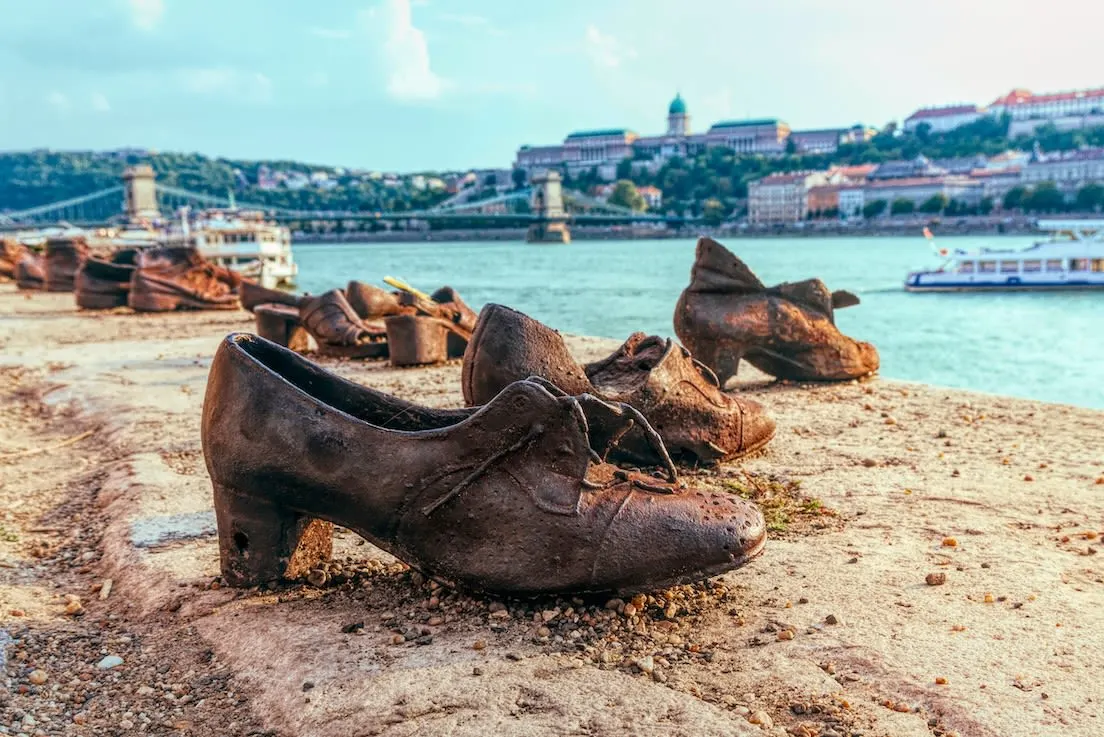
4 Days
From$897USD

10 Days
From$2699USD

11 Days
From$4300USD

9 Days
From$3790USD

10 Days
From$3870USD

9 Days
From$2356USD

7 Days
From$1995USD

5 Days
From$1290USD

7 Days
From$2995USD

4 Days
From$897USD

10 Days
From$2699USD

11 Days
From$4300USD

9 Days
From$3790USD

10 Days
From$3870USD

9 Days
From$2356USD
prev
next
Featured Blogs
prev
next
Our Customers Say It Best
Otto Chuy, Los Angeles, California
I am still surprised how everything worked as planned, without a hitch. All instructions in your itinerary were precise and correct. Your suggestions and comments in each of the locations we went to were very helpful. All your guides, without exception, were wonderful and exactly on time. 

Kathy Mongeau, Ottawa, Ontario
My sister, Ann Ibberson, and I have been back home for a few weeks now and still go on and on about our fabulous trip. We were just blown away in every respect. Given the fact that we only had 1 ½ weeks, you had everything arranged for us so efficiently and your contacts who we dealt with for transfers, tours, hotels were extremely professional and personable. Things could not have gone better. 

Clive Andrew, Brisbane, Queensland
Just a quick note to let you know that I am back home now after probably the best overseas holiday that I have ever had, in no small part due to your very capable organization booking of hotels, tours, & trains. There was just nothing that went wrong with the timings etc. 

Malini Dutta, Boston, Massachusetts
We can't thank you enough for the detailed plans, maps, and suggestions. It really felt that someone was holding our hands and showing us around. We had all the excitement of discovering foreign lands, with none of the problems that can happen while negotiating unfamiliar places. In fact, all the cities felt like home within a few hours of arriving and exploring. 

Bev and Mark Frankel, Williamsburg, Virginia
We could not be more pleased with Go Real Travel! You took the guess work out of things like public transport but still managed to allow us the freedom to tour as we wanted. Our guides were exceptional and every time I saw a Viking Cruise tour of 25 people, I realized the quality experience we were getting with Go Real. 

Marianne Strydom, Paarl, South Africa
I just wanted to thank you for organizing an amazing trip for me – I packed in so much in such a short period of time and everything was just perfect. The way you do things makes it possible to really get to know the destination, which for me as a travel agent could not have been better. 

Otto Chuy, Los Angeles, California
I am still surprised how everything worked as planned, without a hitch. All instructions in your itinerary were precise and correct. Your suggestions and comments in each of the locations we went to were very helpful. All your guides, without exception, were wonderful and exactly on time. 

Kathy Mongeau, Ottawa, Ontario
My sister, Ann Ibberson, and I have been back home for a few weeks now and still go on and on about our fabulous trip. We were just blown away in every respect. Given the fact that we only had 1 ½ weeks, you had everything arranged for us so efficiently and your contacts who we dealt with for transfers, tours, hotels were extremely professional and personable. Things could not have gone better. 

Clive Andrew, Brisbane, Queensland
Just a quick note to let you know that I am back home now after probably the best overseas holiday that I have ever had, in no small part due to your very capable organization booking of hotels, tours, & trains. There was just nothing that went wrong with the timings etc. 

Malini Dutta, Boston, Massachusetts
We can't thank you enough for the detailed plans, maps, and suggestions. It really felt that someone was holding our hands and showing us around. We had all the excitement of discovering foreign lands, with none of the problems that can happen while negotiating unfamiliar places. In fact, all the cities felt like home within a few hours of arriving and exploring. 

Bev and Mark Frankel, Williamsburg, Virginia
We could not be more pleased with Go Real Travel! You took the guess work out of things like public transport but still managed to allow us the freedom to tour as we wanted. Our guides were exceptional and every time I saw a Viking Cruise tour of 25 people, I realized the quality experience we were getting with Go Real. 

Marianne Strydom, Paarl, South Africa
I just wanted to thank you for organizing an amazing trip for me – I packed in so much in such a short period of time and everything was just perfect. The way you do things makes it possible to really get to know the destination, which for me as a travel agent could not have been better. 



Explore cities in more detail
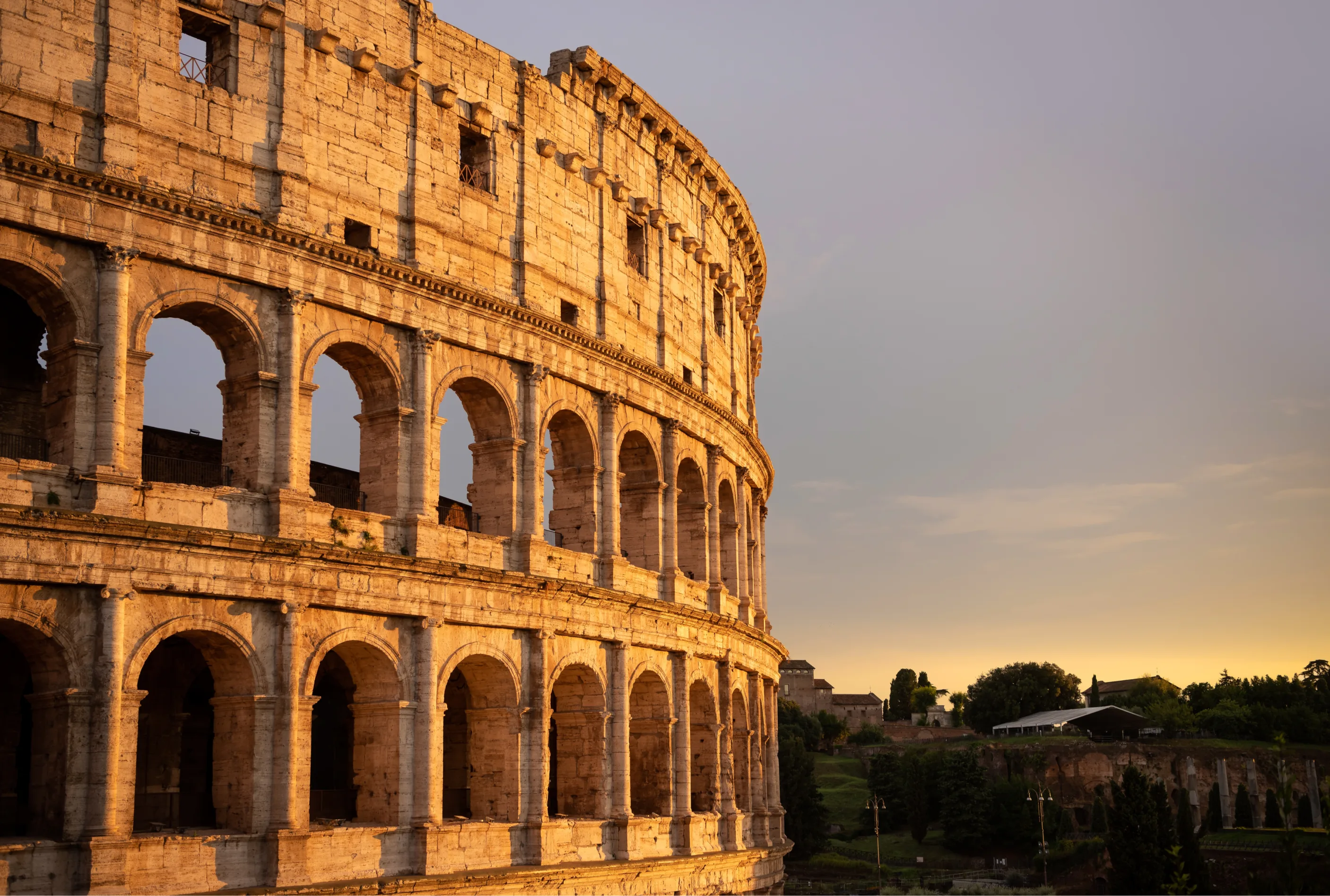
Rome
One of the must-sees of Italy, and indeed all of Europe, Rome is a city with history flowing through its veins. There is an endless amount to see, do, and learn here, with something for every taste and disposition. Rome was the center of Western civilization for a Millenium and during that time, accumulated a list of historical and cultural treasures that no other destination can truly match. The Pantheon, Colosseum, Roman Forum, and Cirus of Maxentius are just a few examples of what can be seen and experienced in Rome, which at times feels more like a giant outdoor museum than a city. At Rome’s heart, you’ll find the Vatican, home of the Roman Catholic Church and the Pope. Here visitors can see the legendary Sistine Chapel. Transcending a mere building, the chapel is a walk-in work of art. Although historical sights can be found on just about every corner, it’s entirely possible to fill a day just wandering around Rome. The city’s charming streets and open Piazzas are filled with beautiful sights and places to sit, grab the best Cappuccino in the world, and enjoy the view.
Read More
Learn About Rome
Build Rome Trip
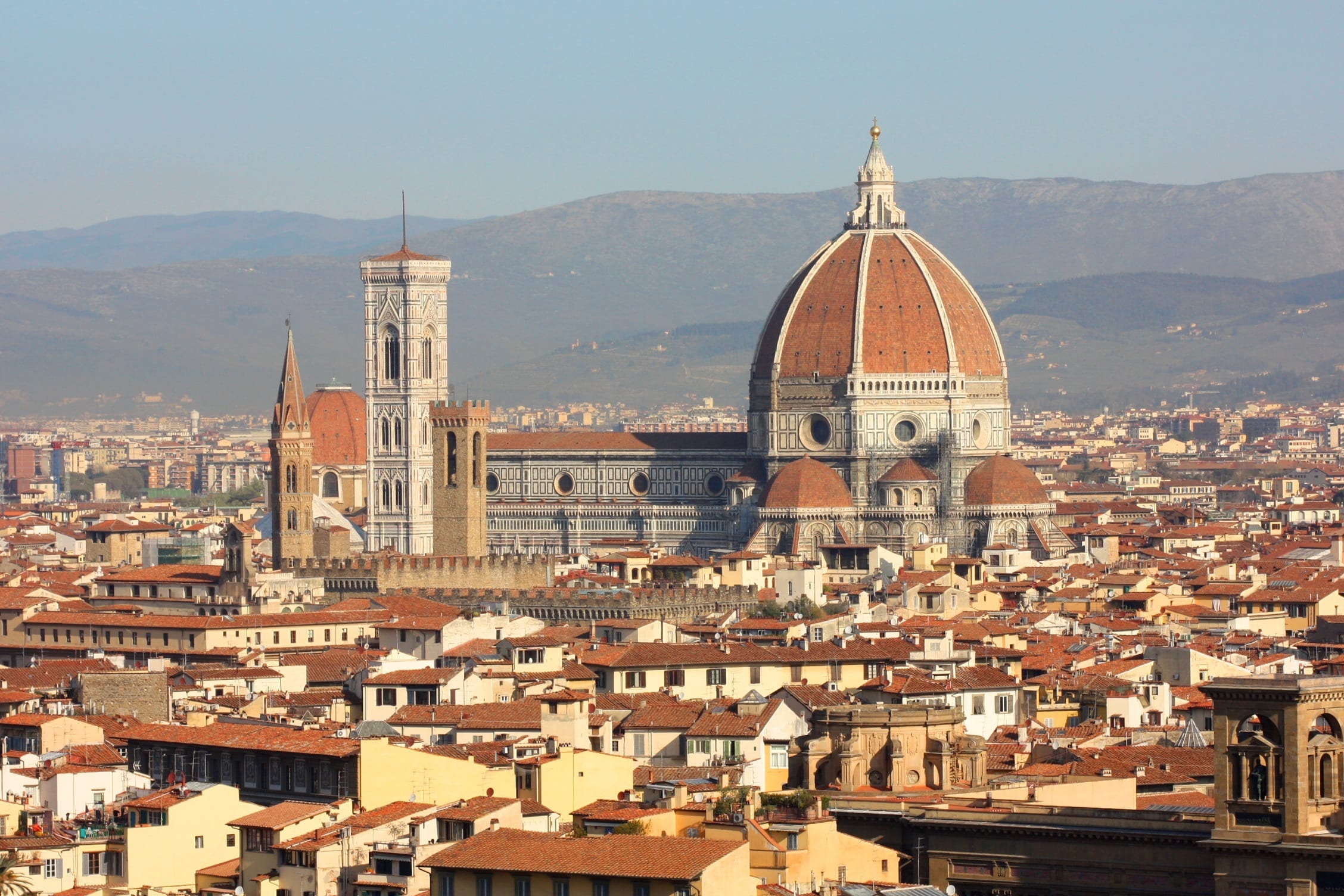
Florence
Culture and history are thick in the air in Florence. Located on the banks of the Arno River in Tuscany, Florence’s past is deeply compelling. The birthplace of the Renaissance, Florence is where innovators like Dante, Machiavelli, Michelangelo, and Da Vinci made their fortunes. Centuries of art, politics, and commerce have left their mark on every stone in this Northern Italian city. In the 15th and 16th centuries, Florentine banks funded new enterprises that went on to change the history of the world. Powerful families like the Medici’s financed some of the finest art in history and pioneered new ways of doing statecraft and politics. As you stand in the Piazzale Michelangelo and gaze upon the city below it’s hard to take it all in at once. It feels like behind every door in Florence might hide a work of genius. Michelangelo’s David and Botticelli’s Primavera can be found just a short walk away. After a long day wandering the streets and gazing at art, fueled by exquisite coffee and gelato, relax like the locals do: with a glass of some of the best wine in the world.
Read More
Learn About Florence
Build Florence Trip
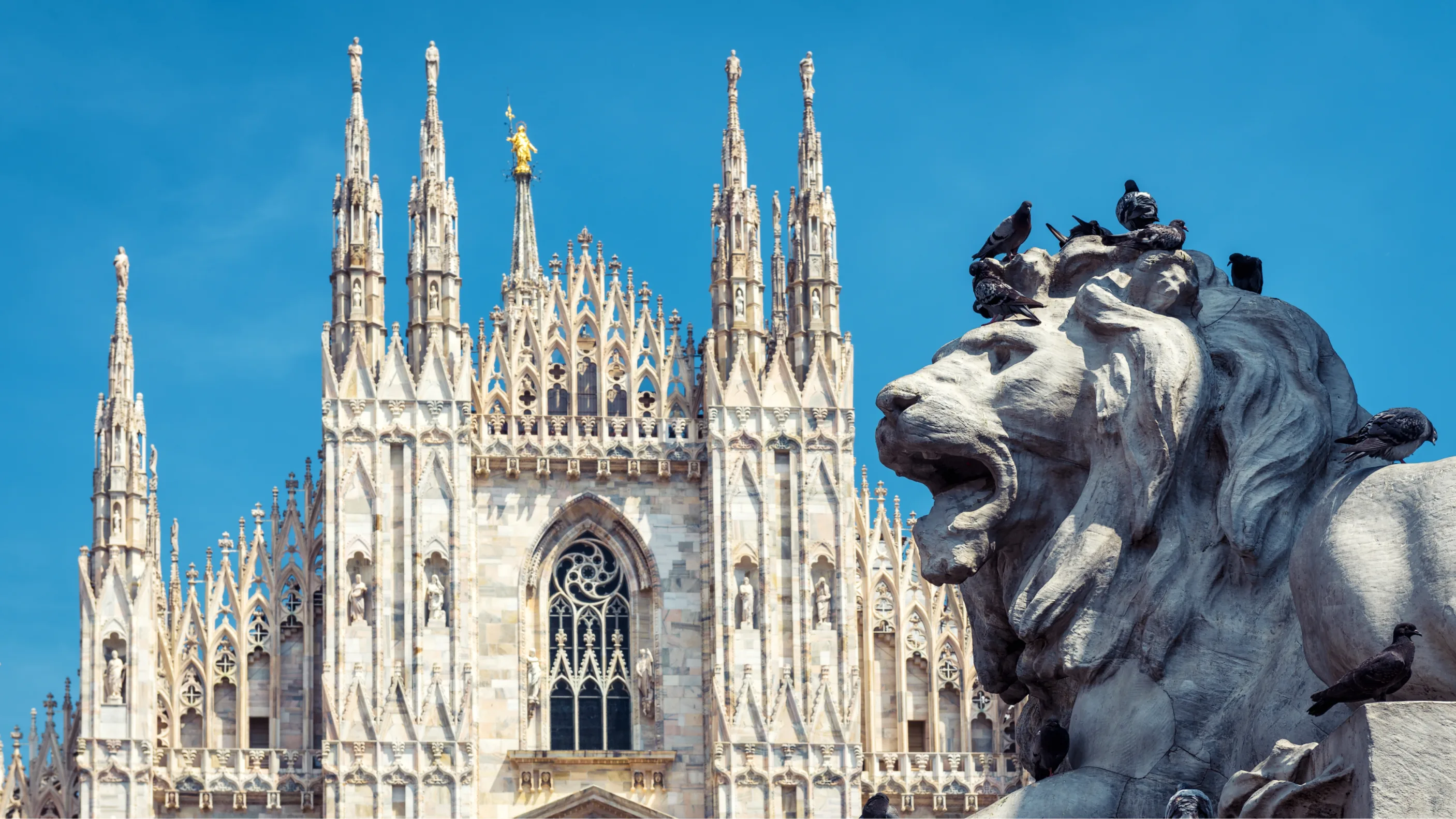
Milan
Milan is Italy’s most forward-looking city. An international center for fashion, fine dining, and design, it seems as though Milanese people breathe style. From the gleam on your wine glass to the twists of its cathedral’s spires, everything in Milan is finished to perfection. Home to the Italian stock exchange, a world-famous fashion industry, and a frantic business district, Milan is fast-paced and commercially minded. The shopping in Milan is second to none. At the Galleria Vittorio Emanuele II, one of the world’s oldest shopping malls, a glass-iron ceiling soars over brands like Louis Vuitton, Gucci, Massimo Dutti, and Amani. Along with the fashion, Milan’s cathedral, castle, and canals are also must-sees. But to view the city’s most prized possession - Leonardo da Vinci’s Last Supper, you must make an appointment. Tickets to view this mural sell out weeks in advance. It is truly a bucket-list worthy work of art. After a day taking in all the glamor and culture, take a seat in one of Milan’s well-appointed eateries. The Navigli Quarter is packed with restaurants, bars, and cafes, perfect for a relaxed Aperol spritz or pizza along the city’s canals.
Read More
Learn About Milan
Build Milan Trip
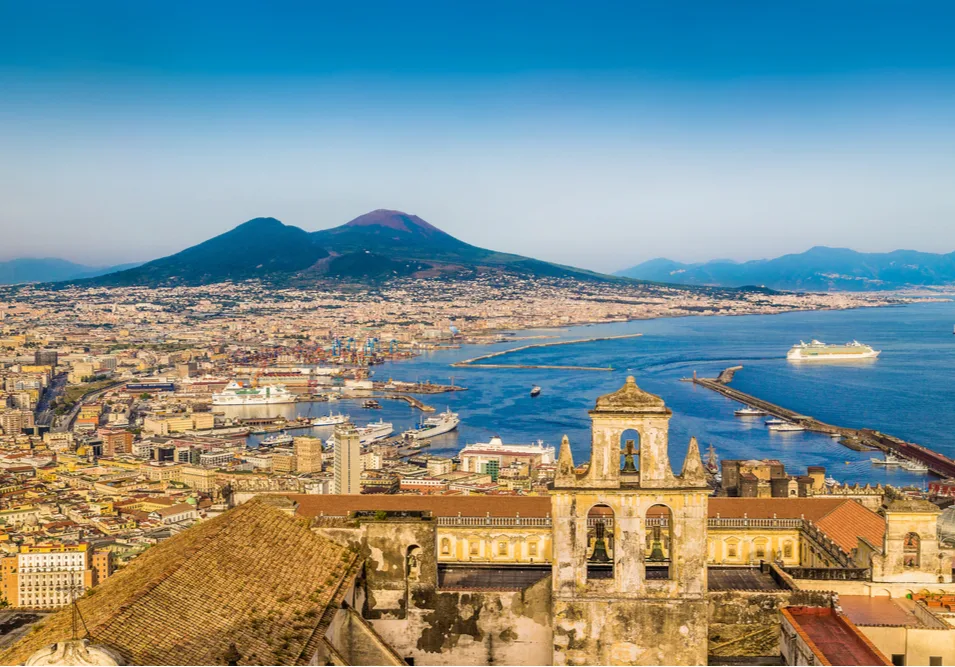
Naples
Gritty and chaotic Naples calls to travelers who want to experience the real Italy. Pressed along the coast of Campania, hilly Naples is jammed with maze-like streets, strung with outdoor clotheslines, descending toward the sea below. A much deserved UNESCO World Heritage site, Naples is famous for its churches, museums, castles, and catacombs. As you navigate the city, you’ll find yourself immersed by its culture and history. You can easily occupy a full day gazing at churches like the Naples Cathedral, San Francesco di Paola, and Cappella Sansevero. If you cast your eyes toward the Gulf of Naples, you’ll see Mount Vesuvius looming over the harbor. This foreboding volcano erupted in AD 79. Not far from the inner city — less than an hour by train — you’ll find the ancient town of Pompeii, its dramatic ruins still preserved in ash from the eruption. One of the best things you can do in Naples is to eat. This is the city where pizza was born. Propped up by its ripe tomatoes, local cheeses, and fresh fish, food from Naples has come to define what many see as the height of Italian cuisine. Everything you taste in Naples seems like a delicacy. Authentic and vivid, Naples is a true Italian city where the ancient world meets the modern-day with a bang.
Read More
Learn About Naples
Build Naples Trip
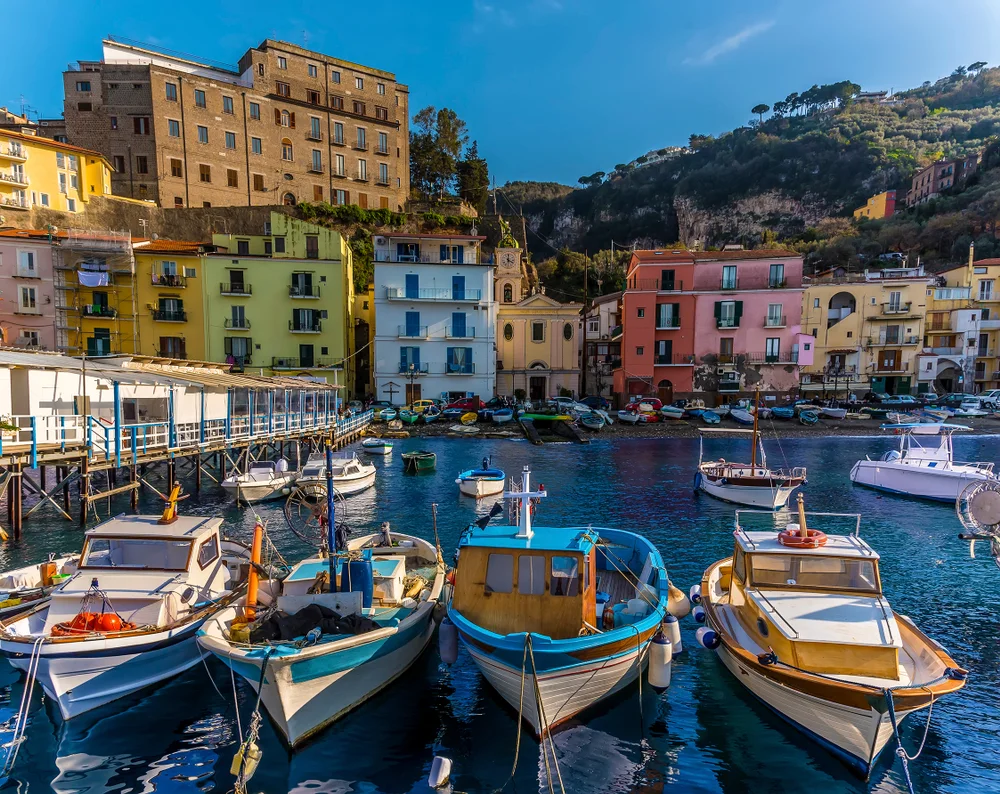
Sorrento
Sorrento is the perfect place to bask in the Mediterranean mood, somewhere to enjoy the sun, the sea, fine dining, and good wine. Churches like the Duomo and the Church del Carmine beg to be explored, along with museums, galleries, and castles. But mostly Sorrento is somewhere to kick back and, for a few days, focus entirely on the business of living - and living well. Seafood dinners, Limoncello evenings, swimming, hiking, and boat trips are all perfect ways to pass time in this seaside haven. If you really tire of all that, Sorrento is well-placed for those looking to explore its surrounding region. A train ride away from Naples, and within fairly easy reach of Pompeii, Sorrento is the doorstep to the attractions of Campania. A short ferry ride away is the island of Capri, with its own collection of beaches, restaurants, and excellent hiking. It’s not necessary, however, to pack the days full of exploring and adventure. While all that is certainly possible, a perfectly acceptable alternative is just to relax and soak in the special Mediterranean vibe.
Read More
Learn About Sorrento
Build Sorrento Trip
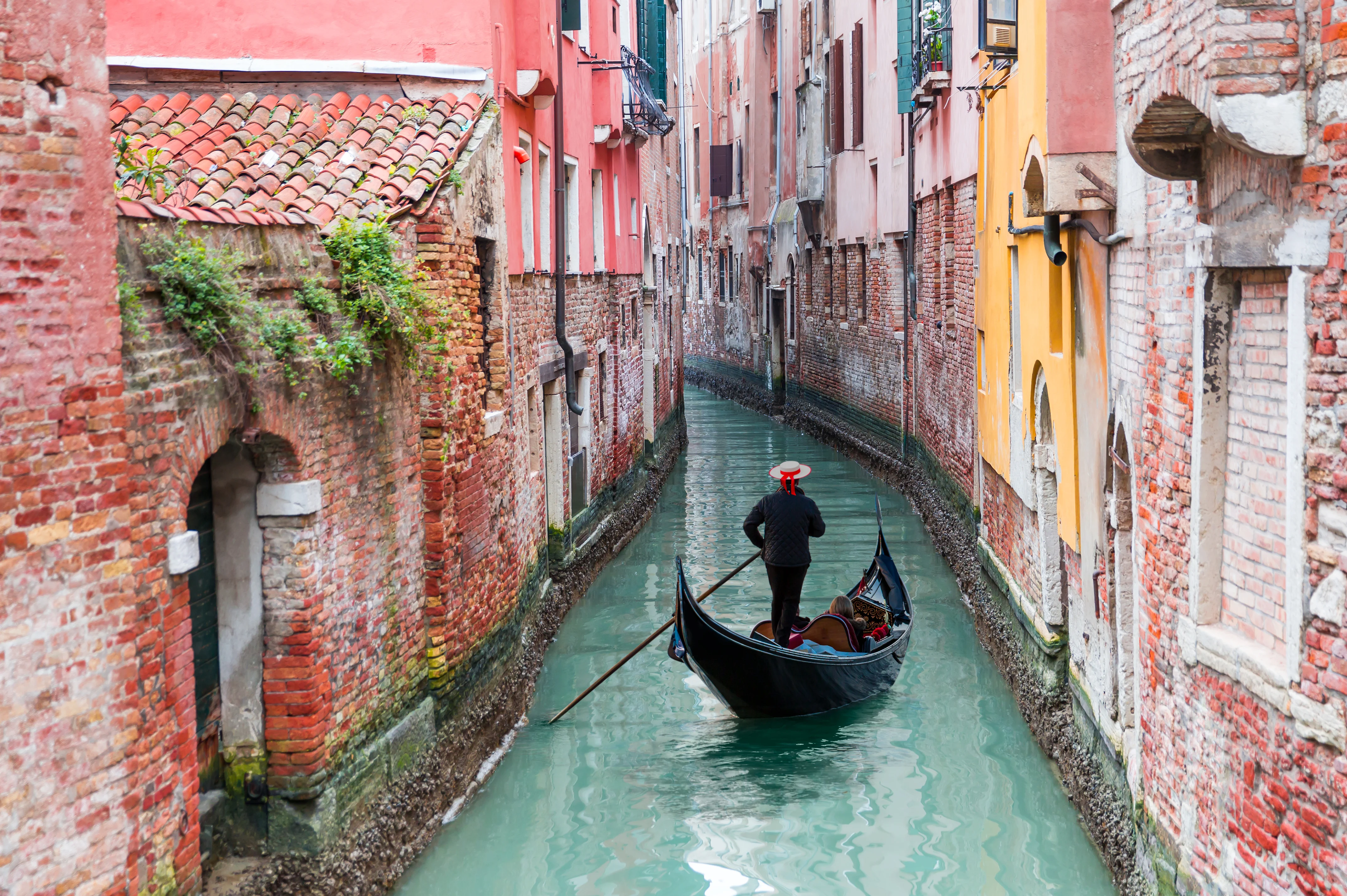
Venice
Venice is a city with no equal. Built on a series of islands on a lagoon, it was once a powerful city-state. Echoes of that old magnificence can be seen everywhere here, from the stunning buildings that rise out of the canals, to the bridges that arc across them. Take a Gondola ride through the canals that form the city’s veins, or wander through the winding streets drinking in the sights. You’ll see Venice attracts tourists in huge numbers, and that’s with good reason. It’s home to a seemingly limitless amount of art, culture, history, and architecture. St Mark’s Basilica, the Doge’s Palace, and the Campanile di San Marco just barely scratch the surface. There’s a 700-year-old market, Rialto, which is still open today. The Ponte di Rialto bridge connects the neighborhoods of San Marco and San Polo, stretching across the Grand Canal. Venice has weathered the last several centuries with elegance and pride, a place that will surpass even your highest expectations.
Read More
Learn About Venice
Build Venice Trip

Rome
One of the must-sees of Italy, and indeed all of Europe, Rome is a city with history flowing through its veins. There is an endless amount to see, do, and learn here, with something for every taste and disposition. Rome was the center of Western civilization for a Millenium and during that time, accumulated a list of historical and cultural treasures that no other destination can truly match. The Pantheon, Colosseum, Roman Forum, and Cirus of Maxentius are just a few examples of what can be seen and experienced in Rome, which at times feels more like a giant outdoor museum than a city. At Rome’s heart, you’ll find the Vatican, home of the Roman Catholic Church and the Pope. Here visitors can see the legendary Sistine Chapel. Transcending a mere building, the chapel is a walk-in work of art. Although historical sights can be found on just about every corner, it’s entirely possible to fill a day just wandering around Rome. The city’s charming streets and open Piazzas are filled with beautiful sights and places to sit, grab the best Cappuccino in the world, and enjoy the view.
Read More
Learn About Rome
Build Rome Trip

Florence
Culture and history are thick in the air in Florence. Located on the banks of the Arno River in Tuscany, Florence’s past is deeply compelling. The birthplace of the Renaissance, Florence is where innovators like Dante, Machiavelli, Michelangelo, and Da Vinci made their fortunes. Centuries of art, politics, and commerce have left their mark on every stone in this Northern Italian city. In the 15th and 16th centuries, Florentine banks funded new enterprises that went on to change the history of the world. Powerful families like the Medici’s financed some of the finest art in history and pioneered new ways of doing statecraft and politics. As you stand in the Piazzale Michelangelo and gaze upon the city below it’s hard to take it all in at once. It feels like behind every door in Florence might hide a work of genius. Michelangelo’s David and Botticelli’s Primavera can be found just a short walk away. After a long day wandering the streets and gazing at art, fueled by exquisite coffee and gelato, relax like the locals do: with a glass of some of the best wine in the world.
Read More
Learn About Florence
Build Florence Trip

Milan
Milan is Italy’s most forward-looking city. An international center for fashion, fine dining, and design, it seems as though Milanese people breathe style. From the gleam on your wine glass to the twists of its cathedral’s spires, everything in Milan is finished to perfection. Home to the Italian stock exchange, a world-famous fashion industry, and a frantic business district, Milan is fast-paced and commercially minded. The shopping in Milan is second to none. At the Galleria Vittorio Emanuele II, one of the world’s oldest shopping malls, a glass-iron ceiling soars over brands like Louis Vuitton, Gucci, Massimo Dutti, and Amani. Along with the fashion, Milan’s cathedral, castle, and canals are also must-sees. But to view the city’s most prized possession - Leonardo da Vinci’s Last Supper, you must make an appointment. Tickets to view this mural sell out weeks in advance. It is truly a bucket-list worthy work of art. After a day taking in all the glamor and culture, take a seat in one of Milan’s well-appointed eateries. The Navigli Quarter is packed with restaurants, bars, and cafes, perfect for a relaxed Aperol spritz or pizza along the city’s canals.
Read More
Learn About Milan
Build Milan Trip

Naples
Gritty and chaotic Naples calls to travelers who want to experience the real Italy. Pressed along the coast of Campania, hilly Naples is jammed with maze-like streets, strung with outdoor clotheslines, descending toward the sea below. A much deserved UNESCO World Heritage site, Naples is famous for its churches, museums, castles, and catacombs. As you navigate the city, you’ll find yourself immersed by its culture and history. You can easily occupy a full day gazing at churches like the Naples Cathedral, San Francesco di Paola, and Cappella Sansevero. If you cast your eyes toward the Gulf of Naples, you’ll see Mount Vesuvius looming over the harbor. This foreboding volcano erupted in AD 79. Not far from the inner city — less than an hour by train — you’ll find the ancient town of Pompeii, its dramatic ruins still preserved in ash from the eruption. One of the best things you can do in Naples is to eat. This is the city where pizza was born. Propped up by its ripe tomatoes, local cheeses, and fresh fish, food from Naples has come to define what many see as the height of Italian cuisine. Everything you taste in Naples seems like a delicacy. Authentic and vivid, Naples is a true Italian city where the ancient world meets the modern-day with a bang.
Read More
Learn About Naples
Build Naples Trip

Sorrento
Sorrento is the perfect place to bask in the Mediterranean mood, somewhere to enjoy the sun, the sea, fine dining, and good wine. Churches like the Duomo and the Church del Carmine beg to be explored, along with museums, galleries, and castles. But mostly Sorrento is somewhere to kick back and, for a few days, focus entirely on the business of living - and living well. Seafood dinners, Limoncello evenings, swimming, hiking, and boat trips are all perfect ways to pass time in this seaside haven. If you really tire of all that, Sorrento is well-placed for those looking to explore its surrounding region. A train ride away from Naples, and within fairly easy reach of Pompeii, Sorrento is the doorstep to the attractions of Campania. A short ferry ride away is the island of Capri, with its own collection of beaches, restaurants, and excellent hiking. It’s not necessary, however, to pack the days full of exploring and adventure. While all that is certainly possible, a perfectly acceptable alternative is just to relax and soak in the special Mediterranean vibe.
Read More
Learn About Sorrento
Build Sorrento Trip

Venice
Venice is a city with no equal. Built on a series of islands on a lagoon, it was once a powerful city-state. Echoes of that old magnificence can be seen everywhere here, from the stunning buildings that rise out of the canals, to the bridges that arc across them. Take a Gondola ride through the canals that form the city’s veins, or wander through the winding streets drinking in the sights. You’ll see Venice attracts tourists in huge numbers, and that’s with good reason. It’s home to a seemingly limitless amount of art, culture, history, and architecture. St Mark’s Basilica, the Doge’s Palace, and the Campanile di San Marco just barely scratch the surface. There’s a 700-year-old market, Rialto, which is still open today. The Ponte di Rialto bridge connects the neighborhoods of San Marco and San Polo, stretching across the Grand Canal. Venice has weathered the last several centuries with elegance and pride, a place that will surpass even your highest expectations.
Read More
Learn About Venice
Build Venice Trip
prev
next


 Map of Your Itinerary Route
Map of Your Itinerary Route
Zoom In to the cities to see your itinerary in more detail


 4.8
4.8 

